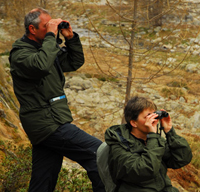Here is our annual selection of the best books and wildlife equipment that we have seen at NHBS over the last year from a variety of categories. It’s been a great year with some fantastic new titles so here’s a reminder of some of the highlights:
Birding
Collins Bird Guide
Field Guide to the Birds of Colombia
Advanced Bird ID Guide
Field Guide to the Birds of the Middle East
Reed and Bush Warblers
RSPB British Birds of Prey
Effects of Climate Change on Birds
Biggest Twitch
Birdwatching Guide to South-East Brazil
Important Bird Areas of the Americas
Botany
The Vegetative Key to the British Flora
Mosses and Liverworts of Britain and Ireland
Grasses of the British Isles
New Flora of the British Isles
Collins Flower Guide
Gardening for Birdwatchers
Mountain Flowers and Trees of Caucasia
Plant Systematics
Essential Plant Pathology
A Field Key to Coastal and Seashore Lichens
Zoology
Badger
Tigers: A Celebration of Life
The Butterflies of Britain and Ireland
Lemurs of Madagscar
Britain’s Butterflies
Mammal Detective
Fishes of the Open Ocean
Colour Identification Guide to the Caterpillars of the British Isles
Biology and Conservation of Wild Felids
Mammals of North America
Ecology and Conservation
Silent Summer
Woodland Creation for Wildlife and People in a Changing Climate
World Atlas of Mangroves
Bee Conservation
Discoveries of the Census of Marine Life
Atlas of Global Conservation
Mapping Species Distributions
Atlas of Biodiversity Risk
Marine Mammal Ecology and Conservation
Wild Mammals in Captivity
Wildlife Equipment
SSF Bat2 Detector
Crushable Pocket Butterfly Net
Paramo Halcon Jacket
Schwegler 2F Bat Box
Bug Box Magnifying Pot
Triplet Loupe 10 x 21mm
Pooter
Lanyard
Bird Holding Bag
WeatherWriter A4 Portrait









 already adopted Paramo for work and leisure including cameramen and sound recordists such as
already adopted Paramo for work and leisure including cameramen and sound recordists such as 


















